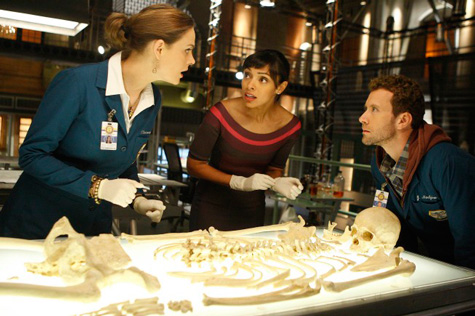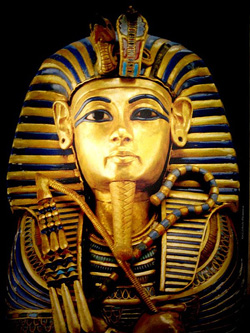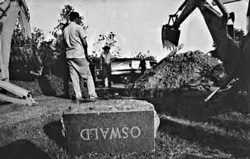
We’ve been bombarded through television with various reality shows dedicated to investigating ancient crimes. Unearthing Ancient Secrets (UAS) and MysteryQuest are just two. UAS has brought actual criminal investigators into the worlds of ancient Rome, Babylonia, Alexandria, and Victorian England to apply modern investigative techniques to such events as Julius Caesar’s murder by Roman senators; the odd, premature death of Alexander the Great; the deaths of Cleopatra and Marc Antony; and, of course, Jack the Ripper.
But all of this begs the question. Can modern forensic and investigative techniques actually shed light on the cold cases of history? They can. And they have.
While there were earlier efforts to look into ancient deaths, the exhumation of President Zachary Taylor in 1991 is an early benchmark in the use of modern forensics to investigate a historical death. Taylor only served 16 months in office, dying in the summer of 1850 from what appeared to be a gastrointestinal ailment. A former University of Florida professor convinced the coroner of Jefferson County, Kentucky, who happened to be Taylor’s closest living descendant, to exhume Taylor’s body on suspicion that the president had been murdered by arsenic poisoning. Neutron activation testing was conducted at Oak Ridge National Laboratory, but scientists found only low levels of arsenic in Taylor’s remains. The ultimate conclusion was that, as diagnosed in 1850, Taylor most likely died of severe gastroenteritis, spurred by the consumption of massive quantities of ice water, cold milk, and fresh cherries. No poison. No conspiracy.

Otzi, the Iceman, was found frozen in the Alps between Austria and Italy in 1991. He is the oldest natural human mummy and was discovered with many of his belongings, offering a fascinating glimpse into life in 3300 BCE. Since his discovery, old Otzi has been the target of literally dozens of forensic examinations, some aimed at discovering how he died. Initial speculation held that he froze to death, but in 2001, X-rays were taken that revealed an arrowhead embedded in his shoulder blade. Otzi had indeed been killed in an act of violence. After careful study, scientists now believe that he died from blood loss due to the wound. Evidence indicates that Otzi was being aided by two or three companions, and that they had tried to remove the arrow. Unfortunately, even Leroy Jethro Gibbs and his team wouldn’t be able to identify Otzi’s killer now.
Another high profile conspiracy theory examined by modern forensics involves the death of Emperor Napoleon while in exile on the Isle of Elba in 1821. The first diagnosis was stomach cancer. But in 1955, a diary belonging to Napoleon’s valet was published. The description of Napoleon’s final days convinced some researchers that Napoleon had been poisoned with arsenic. Early forensic tests conducted on Napoleon’s hair indicated that he had indeed been poisoned. But forensic tests performed in 2007 and 2008 on samples of his hair taken at several points in his life showed the same levels of arsenic. Historians and scientists have pointed out that the environment during Napoleon’s life subjected people to far greater levels of arsenic than currently. This conclusion is still disputed in some circles.

As DNA testing and new, cutting edge forensic technologies are developed, we can expect more expeditions into history’s mysteries. In Tennessee, an effort (thwarted by the National Park Service) to exhume Meriwether Lewis of Lewis & Clark fame has been underway for decades. Officially, Lewis is said to have committed suicide, but evidence exists to indicate that he was murdered. Just a few years ago, the same scientist who exhumed Jesse James requested permission to do a non-intrusive exhumation (whatever that is) of William Shakespeare, to resolve a number of issues. One in particular is to address a theory that Shakespeare was murdered with poison. While the very idea of exhuming President John F. Kennedy is repugnant today, technology may someday provide a truly non-intrusive method of visualizing the late president’s remains in a way that will aid tomorrow’s Abby Sciutos to answer the remaining questions about that historical mystery.
When Tony Hays isn’t traveling the world, teaching students, and adopting puppies, he takes time out to write the Arthurian Mystery series from Tor/Forge.
See all posts by Tony Hays for Criminal Element.

Fascinating. I especially liked learning about Otzi. It is difficult to believe that we can discover so much about a person who has been dead so long–and yet, scientists do so whenever the opportunity presents. So this week, I marveled at Curiosity landing so beautifully on Mars, and I learned from you how forensic science gives us grand windows to the past. Life is good!
It is fascinating to catch glimpses of actual facts from past events. However, the question of who and why must often remain a mystery. My mind boggles at what will become known with future techniques.
I find this facinating, too, especially with all the updates. i’m also curious about Meriwether Lewis…hmmm.
But now Zachary Taylor has me terrified of Cherry Garcia!